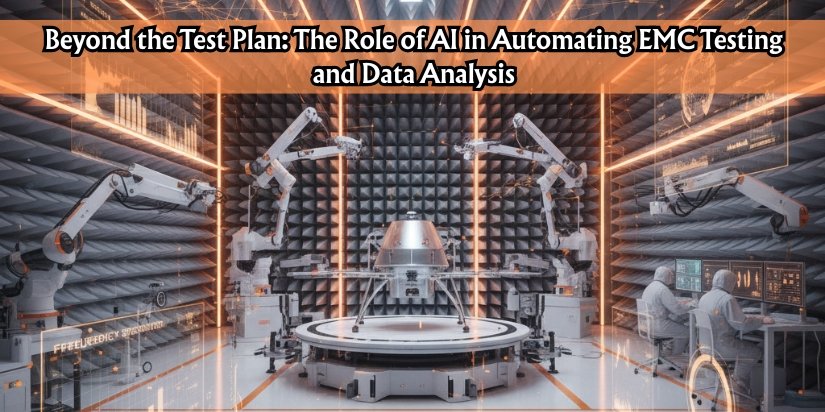Table of Contents
In this blog, we’ll explore the role of AI in automating EMC testing and data analysis, its benefits, challenges, and the future landscape of compliance engineering.
Why EMC Testing Needs Innovation
Every electronic device emits some level of electromagnetic radiation. If not controlled, these emissions can cause interference with nearby equipment, degrade performance, or even create safety hazards. Regulatory bodies such as FCC, CISPR, IEC, and MIL-STD enforce strict EMC compliance requirements.
Traditionally, EMC testing involves:
- Designing a test plan based on standards.
- Setting up devices in anechoic chambers or open test sites.
- Performing repetitive measurements with antennas, probes, and receivers.
- Manually logging and analysing results.
Challenges with traditional methods include:
- Time-consuming: A full compliance cycle can take weeks or months.
- Data overload: Modern tests generate gigabytes of data that are difficult to interpret manually.
- Human error: Manual analysis can overlook subtle interference patterns.
- High cost: Chamber time, test equipment, and engineering resources are expensive.

How AI is Transforming EMC Testing
- Automated Test Execution: AI algorithms can control test equipment, adapt test sequences in real-time, and optimize measurement parameters.
- Data Preprocessing & Noise Filtering: AI distinguishes True Interference Signals from background noise, reducing false positives.
- Pattern Recognition in Emissions: AI detects hidden emission patterns that humans may miss, linking them to design flaws.
- Predictive Compliance Assessment: AI analyzes pre-compliance results to forecast pass/fail outcomes.
- Real-Time Data Analysis: Hundreds of measurements per second can be processed instantly, flagging issues on the spot.
- Digital Twin Integration: AI integrates with Digital Twins to simulate electromagnetic behavior before physical testing.
Benefits of AI in EMC Testing
| Benefit | Impact on EMC Testing |
|---|---|
| Time Efficiency | Reduces test cycles through automation. |
| Cost Savings | Minimizes chamber hours, labor, and redesign costs. |
| Improved Accuracy | Noise filtering and pattern recognition reduce errors. |
| Predictive Insights | Forecasts compliance outcomes before final testing. |
| Scalability | Handles massive data sets and high-volume testing. |
| Innovation Enablement | Frees engineers from repetitive tasks, allowing focus on design. |
Challenges in AI-Driven EMC Testing
- Data Quality Issues: AI relies on clean, labeled data for accuracy.
- Regulatory Acceptance: Standards bodies have yet to fully embrace AI-assisted methods.
- Integration Complexity: Legacy equipment may not support AI automation.
- Skill Gaps: EMC engineers need AI and data science expertise.
- Cybersecurity Risks: Cloud and IoT-driven labs must secure sensitive test data.
Real-World Applications of AI in EMC Testing
- Automotive: AI predicts EMC issues in EV battery systems and autonomous driving electronics.
- Aerospace & Defense: Real-time monitoring ensures avionics and satellites meet MIL-STD requirements.
- Consumer Electronics: AI speeds up pre-compliance testing for smartphones, IoT devices, and IoT devices.
- Medical Devices: AI detects interference risks in pacemakers, MRI machines, and other life-saving systems.
The Future of EMC Testing with AI
- Fully Autonomous EMC Labs: Robotic setups executing 24/7 tests.
- Self-Correcting Designs: AI suggesting layout/shielding improvements.
- Standardization: Regulators may officially recognize AI-assisted results.
- Cloud-Based Analytics: Industry-wide shared platforms for benchmarking and compliance data.
Ultimately, EMC testing is evolving beyond static plans into a data-driven, AI-powered discipline. By automating execution, improving accuracy, and offering predictive insights, AI enables organizations to save time, reduce costs, and innovate faster.
For industries where product performance and safety are non-negotiable, embracing AI in EMC testing is not just a competitive advantage—it’s a necessity for the future.

